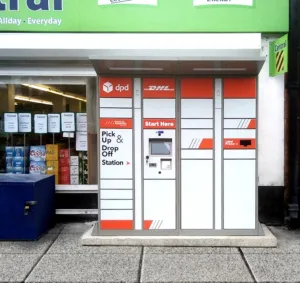By Lorna Burt, Strategy Partner & co-founder, Orange Panther Collective
Frictionlessness has become the holy grail of ecommerce. From the ‘Shop Now’ function on Instagram or Amazon’s One Click To Buy button. The ambition is simple, and largely admirable – to make it as easy as possible for people to get their hands on the things they want. The thinking being that the easier we make it, the more people will do it, and the more often they will do it.
But maybe it’s time to question the orthodoxy of frictionlessness. Is there, in fact, such a thing as too frictionless?
It can’t be right that the solution we’re all striving for is a situation where the brand, and experience, just…didn’t get in the way; that the best we can hope for is unremarkable, featureless and ultimately highly forgettable experience.
As a founder of a creative advertising agency, creating remarkable, valuable and memorable experiences is our holy grail. We want people to notice, to care and to carry our clients’ message on, because we know that valuable experiences are how brand love is built; remembered and shared experiences are how brands are grown.
Perhaps there’s something to be applied from the world of creative communications to the world of retail – and in fact something to be taken from how we build brand messaging to how we build brand experiences, wherever they happen.
Of course, we all know to avoid negative friction. No advertising professional sets out to create something remembered because it’s annoying, off the mark or plain wrong, and I’m not suggesting that we purposefully find ways to add meaningless or even problematic friction into a process or experience.
Instead, we need to consider the existence and role of positive friction.
Friction is something that slows down the journey from A to B. In the example of a car journey, this could be a pothole, or a view so stunning you want to stop and photograph it. The pothole we want to avoid. But the incredible vista? Maybe this is the sort of experience we want to be creating for our brands. An experience that rewards and is rewarding, that adds to the experience and enhances it.
How might we go about creating positive friction?
Firstly, we have to really understand the customer journey. Thinking not just about how we go from ‘basket to bought’ as seamlessly as possible, but understanding how people discover and first encounter the brand, how people navigate our offering and make the right choice, all the way through to how we look after them post-purchase. And we need to not only map this out to its fullest extent, but really understand how people feel at all these points, not just what they do.
And once we’ve understood that emotional journey we can then look to build positive friction in two ways:
Make the highs higher
- This simply means uncovering the best parts of an experience and finding ways to heighten them. Think of it like putting a picnic bench next to that stunning vista. How could we reinforce an already positive experience? Allow it to be shared for social kudos? Make it more personal or tailored?
Raise the lowest lows
- Finding the parts of the experience where people have lowest expectations, and exceeding them. This is often cited as an experience where we’re undertaking something we fully expect to be negative – hard, complex, even sad – cancelling a holiday, say. The trick is to think about how we can exceed expectations at this phase of the journey – can we make it more responsive? Can we make it more empathetic? Can we be unexpectedly generous?
And thinking about positive friction doesn’t just apply to how you sell, but what you sell too. From Apple superbly heightening the already exciting and anticipatory experience of unboxing a new iPhone with that perfectly crafted packaging. Or Samsung recognising the dread that comes with switching data from an old phone to a new (and the fear all of your photos, contacts and messages will be lost in the process), so providing the USB cable that makes it feel secure and seamless.
In short, truly frictionless experiences are also incredibly forgettable ones. So rather than (unthinkingly, ironically) aiming for frictionlessness, we need to instead remember how value is built; through not just minimising negative experiences, but maximising positive ones.







